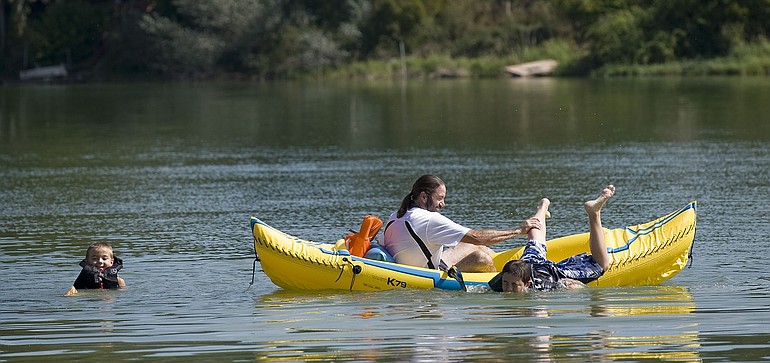• Population: 5,250
• Must see: Horseshoe Lake, Hulda Klager Lilac Gardens, Cedar Creek Grist Mill
• Web: http://www.ci.woodland.wa.us,
http://www.lewisriver.com.
Straddling Clark and Cowlitz counties, Woodland is defined by its roads and rivers.
The Columbia River and the North Fork of the Lewis River shaped Woodland’s early history and continued to leave their marks over the last 165 years.
Most of that impact has been beneficial, with those waterways serving as transportation links that made the community an early commercial center.
In 1845, when Adolphus Lewis retired from the Hudson’s Bay Company, he and his brother settled east of present-day Woodland, near the river that now bears the family’s name.
• Population: 5,250
• Must see: Horseshoe Lake, Hulda Klager Lilac Gardens, Cedar Creek Grist Mill
• Web: <a href="http://www.ci.woodland.wa.us">http://www.ci.woodland.wa.us</a>,
<a href="http://www.lewisriver.com">http://www.lewisriver.com</a>.
(Adolphus apparently didn’t spend much time there. According to one story, the 1846 treaty between Britain and the United States meant his home was American territory, so Lewis headed north where Queen Victoria still held sway).
A riverboat that once docked at Woodland, “Mascot,” served as a symbol when the city celebrated its centennial in 2006.
But the rivers also have written some soggy chapters in Woodland history, with memorable floods.
Roads and highways also have left their mark on Woodland — including one of those waterways. In 1940, Horseshoe Lake was created when a loop of the river was separated from the main course of the North Fork of the Lewis by construction of the Pacific Highway.
Eventually, the freeway system meant that north- and south-bound travelers could drive right past Woodland. In 1964, freeway exits and an interchange eliminated the Woodland stoplight on Interstate 5.
But the freeway system also contributed to the city’s growth, providing a hometown for people who commute to jobs in the Portland-Vancouver or Kelso-Longview regions.
Woodland’s population hit about 5,250 in 2010, according to the most recent estimate from the Washington Office of Financial Management.
That climb over the 5,000-resident mark wasn’t just a numerical milestone, by the way. In September 2008, two additional members were appointed to Woodland’s city council, bringing the governing panel to seven members. That marked Woodland’s promotion from the “small city” category of Washington municipalities after its population topped 5,000.
The overall population of the greater Woodland community is more than 10,000.
Community celebrations include the annual Planter’s Days, held on the third weekend in June. First held in 1922, it is the longest continuously running civic celebration in the state. The festival celebrates the completion of the dikes along the Columbia and Lewis rivers that protected low-lying farms from flooding. This year’s event will run from June 16-19.
Another event — the annual Lilac Festival — commemorates Hulda Klager, who was 13 when her family came to Woodland in 1877. She became a renowned lilac breeder, and the Hulda Klager Lilac Gardens was added to the National Register of Historic Places in 1971. This year’s Lilac Festival is April 16 through May 8, Mother’s Day.
And another floral-themed event, the annual Tulip Festival, is scheduled from April 2-30.
Other regional attractions are the Cedar Creek Grist Mill, northeast of town. Built in 1876, it’s the oldest operating grist mill in the state.




